February 22 - 28, 2015: Issue 203
CAPPADOCIA
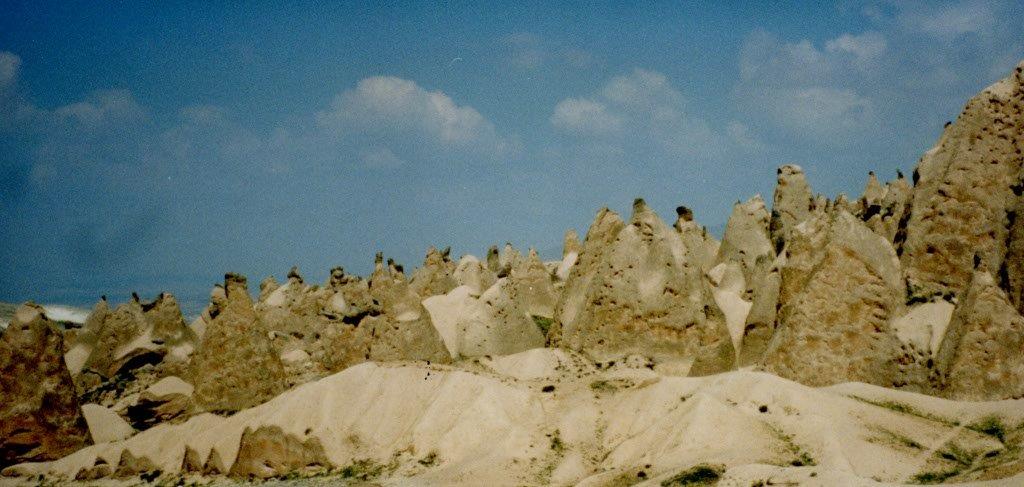
Panoramic view of rock formations.
CAPPADOCIA
by George Repin
Cappadocia, a region of great historical and cultural interest in Eastern Anatolia, lies in the centre of present day Turkey. It is notable for its fantastic topography of honeycombed hills and towering boulders set in the stark Anatolian plain.
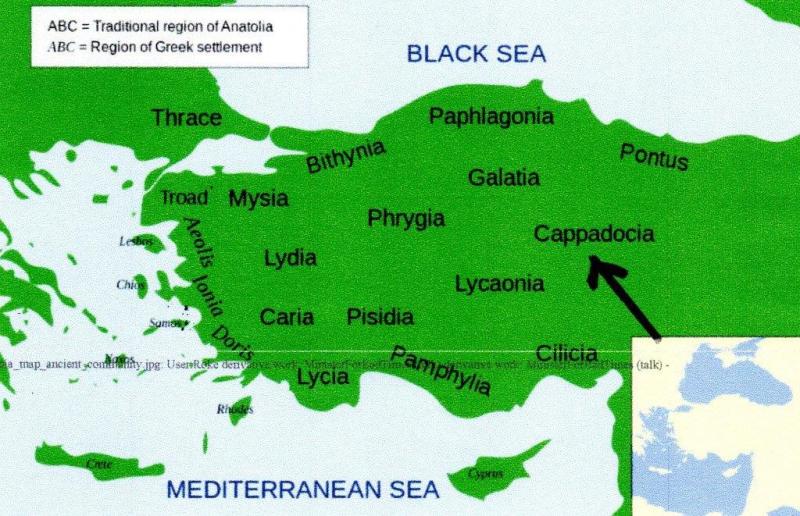
Turkey showing location of Cappadocia area – from Wikipedia.
The earliest record of Cappadocia dates from the late 6th Century BCE when it appears, in trilingual inscriptions, as one of the countries of the Persian Empire. It has a long recorded history. In the late Bronze Age (around 1,600 BCE) it was the homeland of the Hittite power centred at Hattusa. In later periods the Persians and the Romans held sway.
The unique topography had its origin in the Cenozoic era when the area was the scene of intense volcanic activity with three major volcanoes tossing out lava, ash and basalt boulders, resulting in the gradual buildup of a plateau. Over time volcanic ash was transformed into tufa cemented by chalk carried by rivers and deposited into lakes. In places the tufa was almost 150m thick. While the inside of the tufa was relatively soft the surface was hardened by contact with air. Subsequent erosion by rain, wind and earthquakes produced the strange landscape. The softer tufa eroded while the hard basalt and andesite rocks remained. In the area near Gӧreme the rocks eroded into hundreds of spectacular pillars and minaret forms and where they sat on the tops of columns they produced the so-called fairy chimneys.
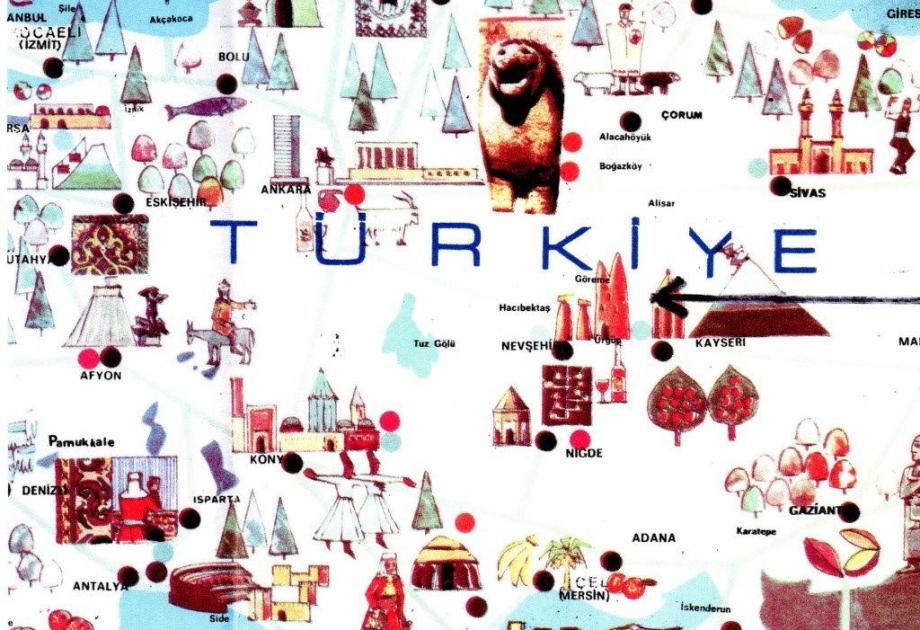
Turkey showing area of the rock formations - SE of Ankara - from "Cappadocia" by Mehmet Ali Birant, 1997 - ISBN 975-439-010-X
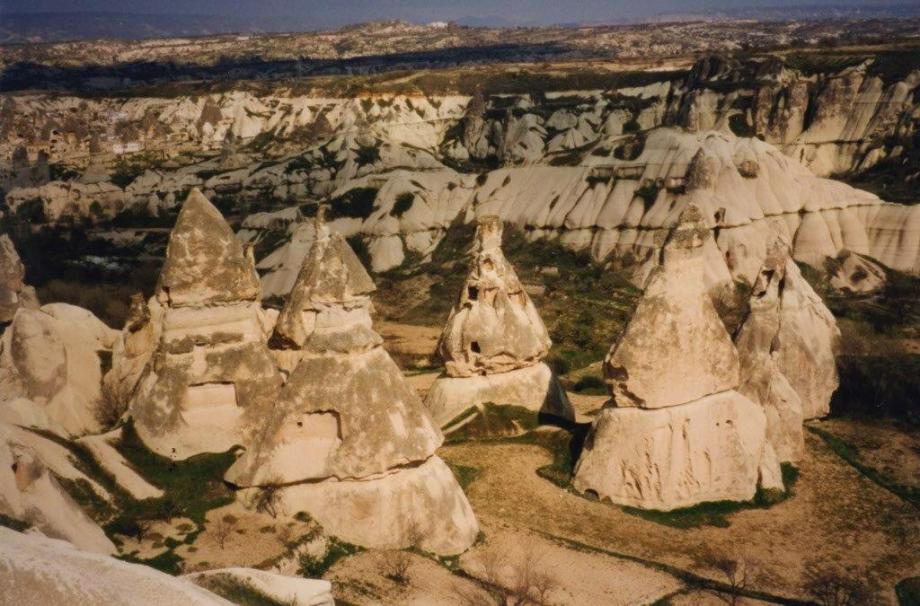
Rock formations.
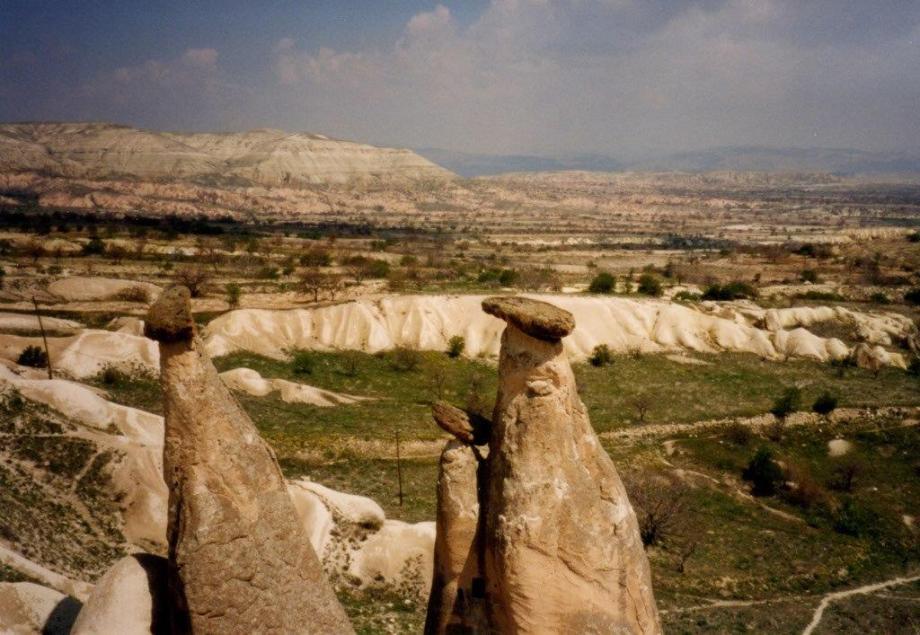
A fairy-tower with valley in the distance.
The character of tufa provided a relatively easy way to excavate not only subterranean habitations but also galleries in the towers and pinnacles so that, as the persecution of Christians in Palestine forced them to seek safe havens elsewhere, the natural structure of Cappadocia offered ready refuge and an adoptive country.
They carved out churches, chapels, monasteries and nunneries in the soft tufa and, to protect themselves from marauders they developed defensive devices so they could live in relative safety. From the end of the 8th Century they began to decorate their rock-cut churches and chapels with colourful icons and frescos. Because tufa does not absorb paint it proved an excellent base for murals. Many of the decorated churches and chapels can still be seen and are in reasonably good condition although some were severely damaged during the period of iconoclasm (726 – 843 CE) and, unfortunately, in more recent times by tourists.
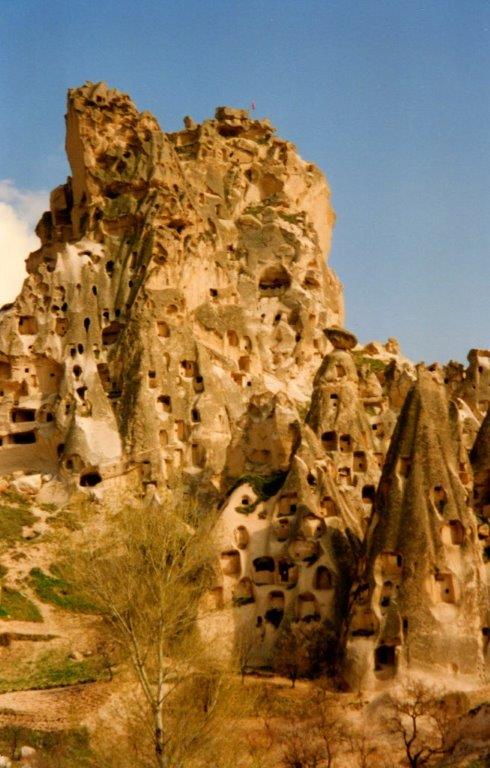
Large rock with extensive fenestration.
Exploring various areas in Cappadocia, such as Ürgüp, Nevşehir, El Nazar, Helvedere and Ilhara discloses dazzling sights but Gӧreme is outstanding because it is surrounded by fairy chimneys and by hollowed-out rock-formations in which people lived.
Gӧreme was a monastic centre in 300 - 1,200 CE.
Photographs by George Repin in 1997.
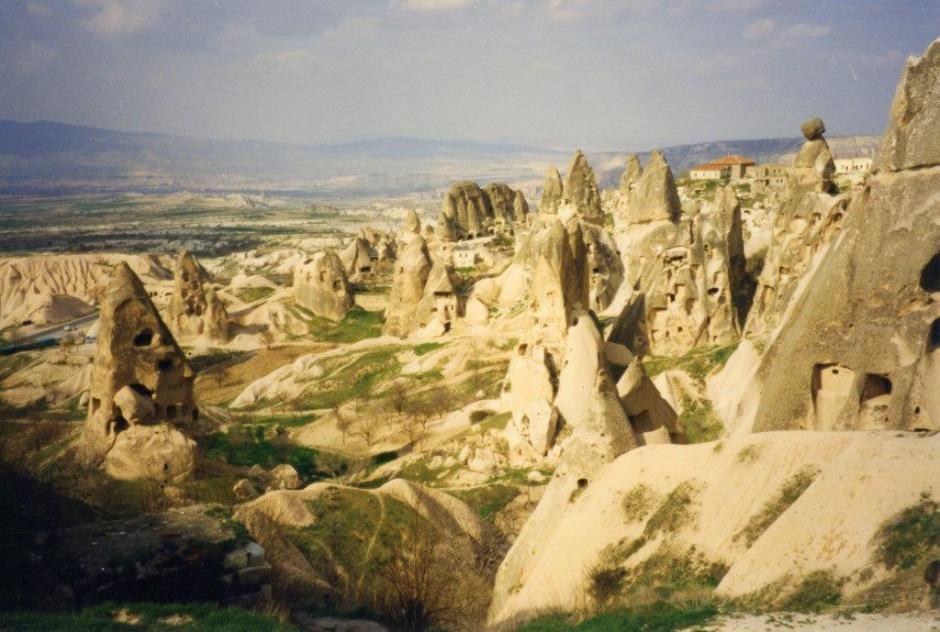
Windows in the rocks.
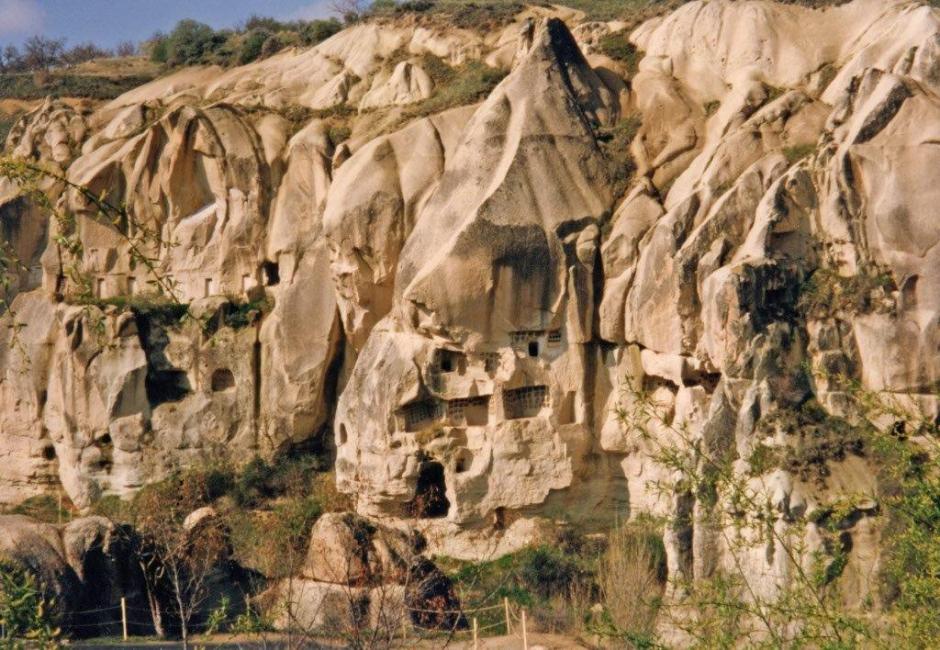
Carved-out dwellings.
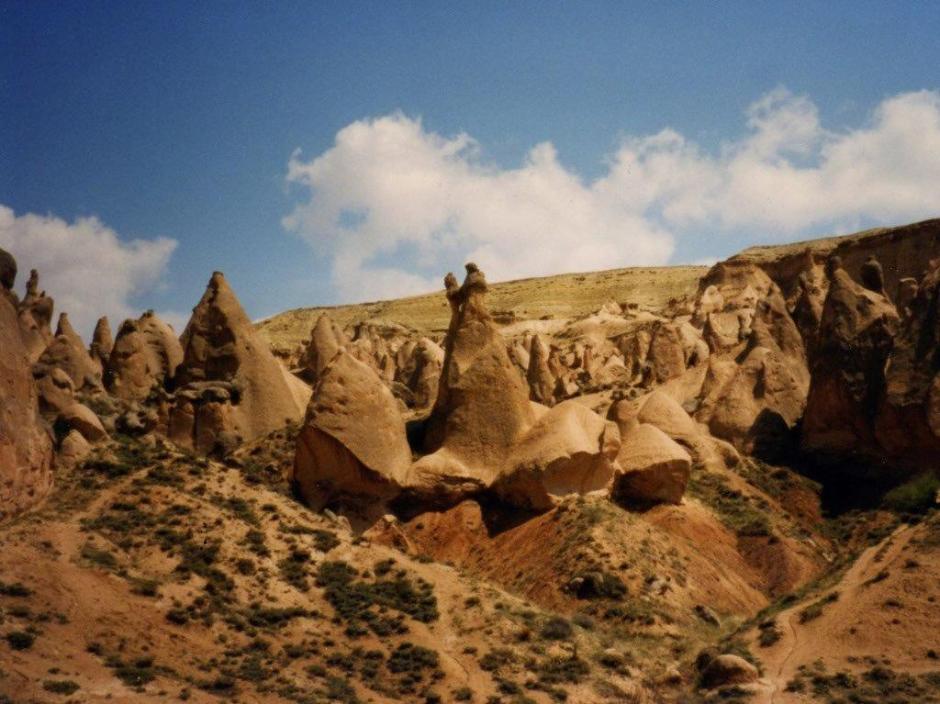
Another view of rock formations.
Previous Reflections by George Repin
The Nineteen Thirties Remembering Rowe Street The Sydney Push Saturday Night at the Movies Shooting Through Like A Bondi Tram A Stop On The Road To Canberra City Department Stores - Gone and Mostly Forgotten An Australian Icon - thanks to Billy Hughes Crossing The Pacific in the 1930s Hill End The Paragon at Katoomba Seafood In Sydney How Far From Sydney? Cockatoo Island Over The Years The Seagull at the Melbourne Festival in 1991 Busby's Bore The Trocadero In Sydney Cahill's restaurants Medical Pioneers in Australian Wine Making Pedal Power and the Royal Flying Doctor Service Pambula and the Charles Darwin Connection Gloucester and the Barrington Tops A Millenium Apart Have You Stopped to Look? Gulgong Il Porcellino Olympia Durham Hall Sargent's Tea Rooms Pie Shops and Street Photographers The Ballet Russes and Their Friends in Australia Hotels at Bondi Alma Ata Conference - 1978 Keukenhof - 1954 The Lands Department Building and Yellowblock Sandstone The Goroka Show - 1958 A Gem On The Quay Staffa The Matson Line and Keepsake Menus Kokeshi Dolls The Coal Mine At Balmain The Hyde Park Barracks The Changing Faces Of Sydney From Pounds and Pence to Dollars and Cents Nell Tritton and Alexander Kerensky Making A Difference In Ethiopia William Balmain J C Bendrodt and Princes Restaurant Azzalin Orlando Romano and Romano's Restaurant Waldheim Alcohol in Restaurants Before 1955 King Island Kelp The Mercury Theatre Around Angkor - 1963 Angkor Wat 1963 Costumes From the Ballets Russe Clifton at Kirribilli Chairman Mao's Personal Physician The Toby Tavern The MoKa at Kings Cross The Oceaographic Museum in Monaco The Island of Elba Russian Fairy Tale Plates Meteora Souda Bay War Cemetery Barrow, Alaska Cloisonné Tripitaka Koreana Minshuku The Third Man Photographs and Memories Not A Chagall! Did You Listen? Did You Ask?Napier (Ahuriri, Maori) New Zealand Borobudur Ggantija Temples Plumes and Pearlshells Murano University of Padua Ancient Puebloe Peoples - The Anasazi Pula The Gondolas of Venice Cinque Terre Visiting the Iban David The Living Desert Bryce Canyon National Park Aphrodisias The Divine Comedy Caodaism Sapa and local Hill People A Few Children
Copyright George Repin 2015. All Rights Reserved.